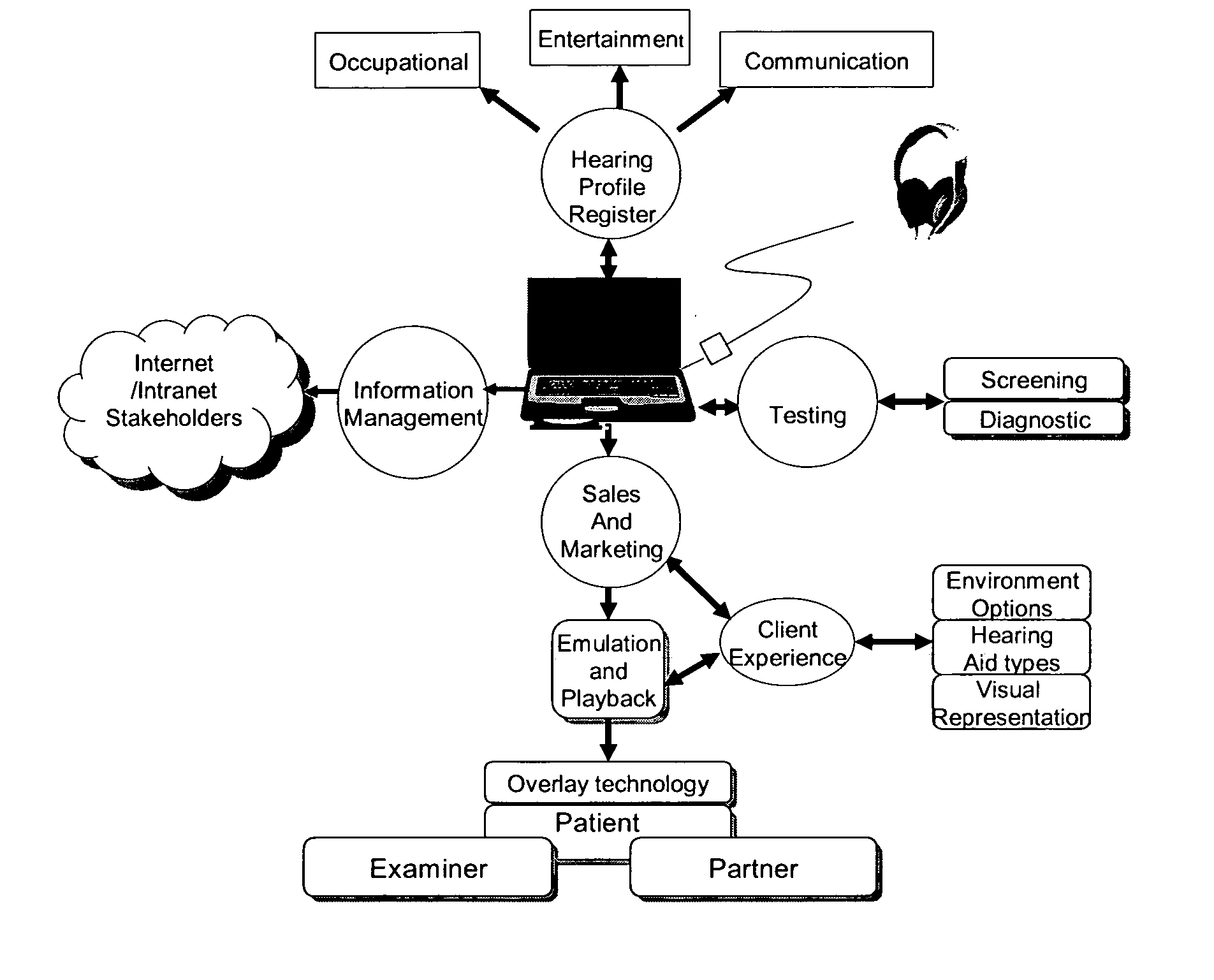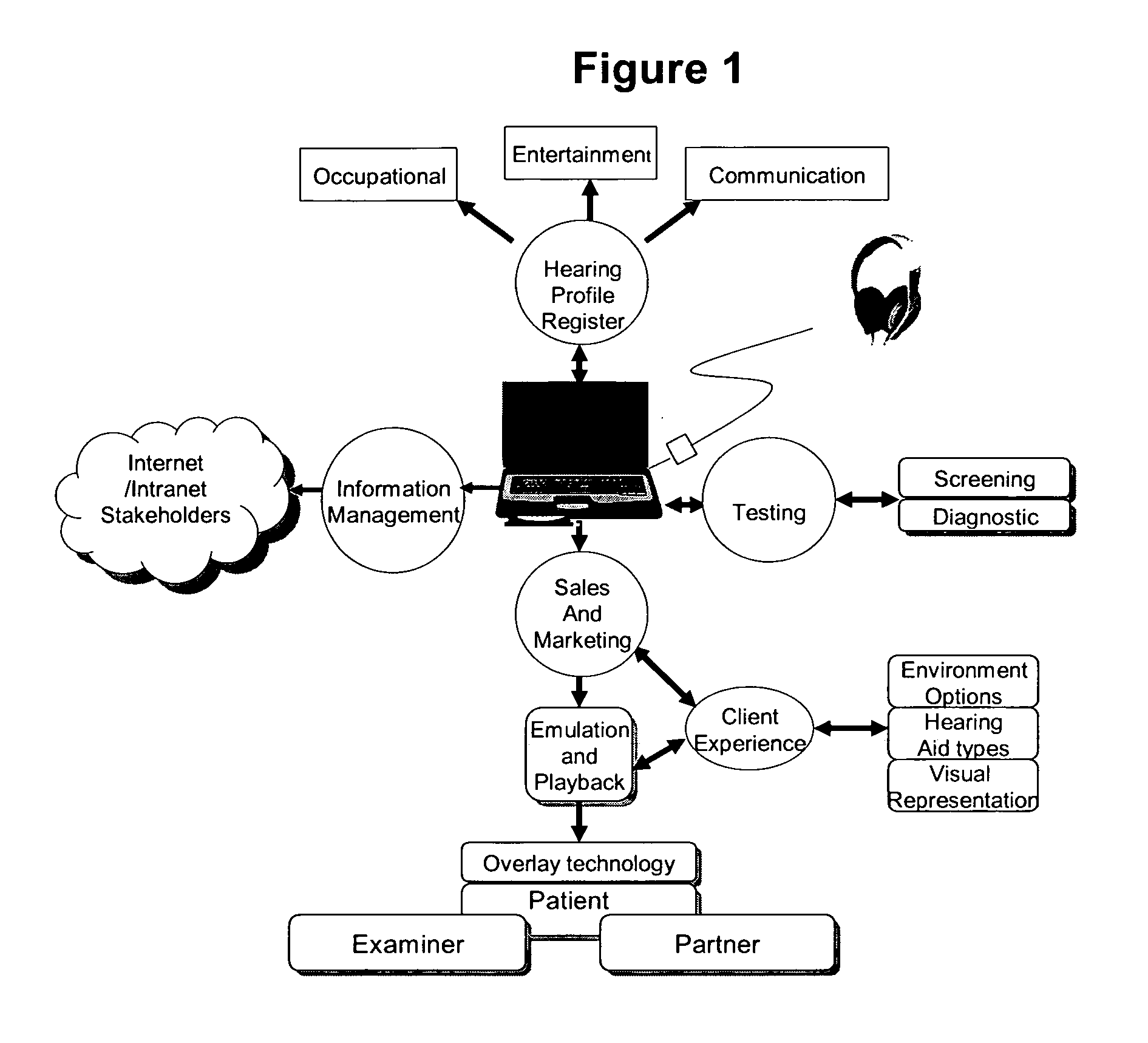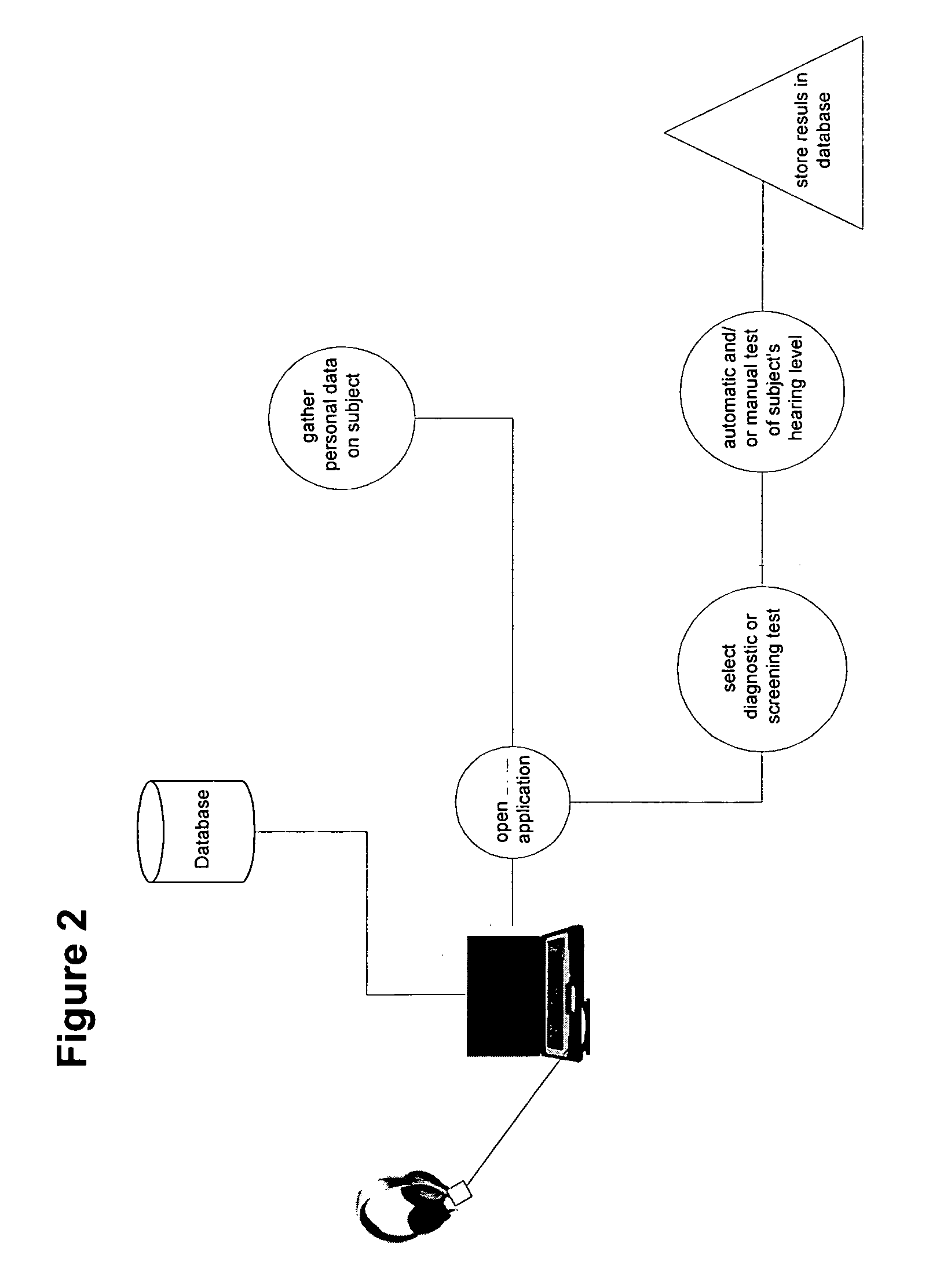Calibrated digital headset and audiometric test methods therewith
a digital headset and audiometric technology, applied in the field of audiometric testing and analysis, can solve the problems of limiting the testing performed with the system to only the prescribed frequency, no way to test at intermediate frequency, and taking them out of service, so as to facilitate further diagnosis and improve the accuracy of sound reproduction
- Summary
- Abstract
- Description
- Claims
- Application Information
AI Technical Summary
Benefits of technology
Problems solved by technology
Method used
Image
Examples
Embodiment Construction
[0026]Referring to FIG. 1, the overall audiometric test system according to the present invention will be generally described.
[0027]A hearing test is either self-administered or administered by a trained test provider, such as a healthcare professional, industrial screener or the like. When administered by a healthcare professional, prior to performing the test, the test recipient (alternatively referred to herein as a user or a subject) is first examined in the ears using an Otoscope to check for noticeable conditions which may cause hearing loss such as infection, wax, foreign object blockage, etc. If an electronic Otoscope is used the health professional can retain a digital image record of the ear canal and eardrum in the computer with the subject's test results. The subject answers a questionnaire to allow the health professional to get a general assessment of the subject's hearing ability based on medical history, lifestyle, activities and hobbies which could affect hearing, s...
PUM
 Login to View More
Login to View More Abstract
Description
Claims
Application Information
 Login to View More
Login to View More - R&D
- Intellectual Property
- Life Sciences
- Materials
- Tech Scout
- Unparalleled Data Quality
- Higher Quality Content
- 60% Fewer Hallucinations
Browse by: Latest US Patents, China's latest patents, Technical Efficacy Thesaurus, Application Domain, Technology Topic, Popular Technical Reports.
© 2025 PatSnap. All rights reserved.Legal|Privacy policy|Modern Slavery Act Transparency Statement|Sitemap|About US| Contact US: help@patsnap.com



